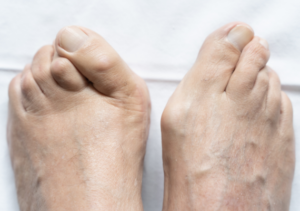Mallet toe is a foot deformity characterized by abnormal bending of the joint at the end of the toe, causing the toe to curl downward. This condition can lead to discomfort, pain, and difficulty fitting into shoes.
Causes of Mallet Toe
- Muscle Imbalance: Imbalance between the muscles and tendons that control toe movement.
- Toe Trauma: Previous injury or trauma to the toe joints can contribute to deformity.
- Footwear: Wearing shoes that are too tight, narrow, or high-heeled can force toes into an unnatural position.
- Genetics: Some individuals may have an inherited predisposition to develop mallet toes.
- Arthritis: Joint inflammation and stiffness affecting toe alignment.

